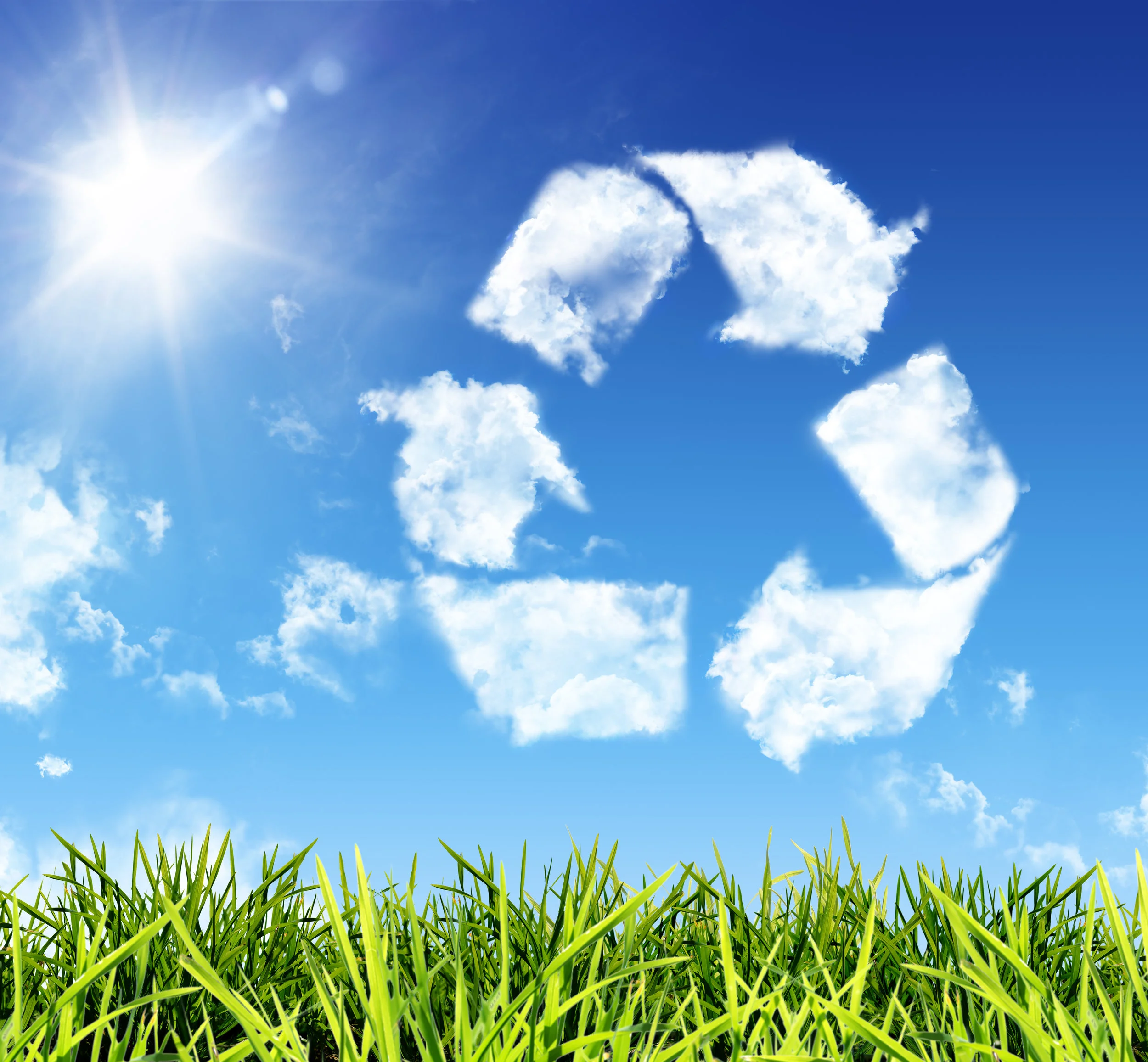
All News
Holistic Approach Needed to Solve Coffee Cup Recycling Problem
Paul Foot, a partner and patent attorney at intellectual property firm Withers & Rogers, explores innovation in the context of the proposed 'latte levy'.
With increasing numbers of food and drink outlets offering takeaway beverages in disposable packaging, it is unlikely that the issue of packaging recycling is going to go away any time soon. The UK alone uses 2.5 billion paper coffee cups every year.
The composition of drinks packaging lies at the root of the problem. Due to the nature of the product they hold – liquid beverages – drinks packaging needs to be sturdy and water resistant. In order to achieve this, packaging manufacturers have adopted a method by which a plastic laminate is co-extruded onto a paper or card sheet. The end result is a waterproof material, which consists of about five per cent plastic.
Plastic is not a biodegradable substance and the issue of recycling coffee cup packaging stems more from the separation of this plastic laminate from the cardboard layer. If these two layers can’t easily be separated in the recycling process, there is a risk of contaminating the paper pulp, causing further issues down the line.
There are recycling facilities around the world that can successfully undertake this kind of process. However, due to the complex and costly plant and machinery required, they are not widely available in the UK.
In fact, there are only four recycling companies globally that have this capability, meaning only six million cups are recycled per year (i.e. only 0.25%).
Stronger incentives are needed
The war on drinks packaging waste is being led by France, where the Government has announced plans to ban all disposable cups and plates by 2020. Whilst a similar approach has not yet been adopted in the UK, calls to find solutions to the coffee cup dilemma have intensified.
In 2016, the Liberal Democrats proposed the introduction of a 5p levy on all disposable coffee cups, but this call was rejected. This debate has been reignited with a report issued in December 2017 by the Environmental Audit Committee. This report suggests that, similar to the plastic bag charge (which has proved to reduce the use of plastic bags by 83%), a coffee cup charge of at least 25p could reduce the use of disposable cups by up to 30%.
If such a levy was introduced, the funds could be allocated to invest in improved recycling infrastructure and reprocessing facilities. While this would have a positive effect, it wouldn’t necessarily provide a long-term solution, and it would take a long time to implement.
Stronger legal measures, such as those applied in France would have greater effect. For example, a move to ban all disposable coffee cups by a certain date would force manufacturers and coffee retailers to invest heavily in R&D activities to find new recycling or manufacturing methods or innovative new cup materials.
Some retailers have already introduced schemes to try and dissuade consumers from using disposable coffee cups. In particular, there has been a push for the adoption of reusable cups but this approach is unlikely to gain widespread appeal and current uptake is only around 1%. The convenience of being able to collect takeaway drinks as and when needed will be hard to overcome, even if discounts are available to those bringing a reusable cup. Such discounts alone are unlikely to change behaviour significantly.
Innovating the way to the future
Fresh approaches are urgently needed to tackle this recycling problem. This is likely to involve sector design specialists and others across the supply chain working together to find a holistic solution to reduce drinks packaging waste.
A number of major players in the coffee cup industry - Benders Paper Cups, Bunzl Catering Supplies, Caffe Nero, Dart Products Europe, Greggs, Huhtamaki International Paper, McDonald's UK, Nestle, Pret a Manger, Seda Group, Starbucks and Stora Enso - recently signed up to an agreement with the Alliance for Beverage Cartons and the Environment (ACE UK), with the aim of working towards a long-term solution. However, to date, examples of innovation activity appear few and far between.
Instead, there are some signs of progress from a number of smaller, innovation-led businesses. Set up in 2016 by entrepreneur Martin Myerscough, Frugalpac has developed an alternative cup design. In their design, instead of virgin paper laminated with a thin layer of plastic, the cup has a plastic liner that is lightly glued in place, so that it can be easily separated from its recycled cardboard shell at a standard paper recycling mill. Recycled board can be used in this way as no part of the board needs to be in contact with the drink itself, in which case virgin paper stock would be required for regulatory reasons. Frugalpac has protected this concept with a UK patent - GB2538429 - and is currently in talks with several major coffee retailers to supply their cups.
Another recent innovation is the 'reCUP', by Smart Planet Technologies Inc in California, USA. Unlike the coating of standard paper cups, the makers of the reCUP claim that its 'EarthCoating' formation can be easily washed out in the recycling process; allowing the paper to be recycled. They also claim that no changes need to be made to the cup manufacturing process and the cost of materials remains the same. In theory at least, this innovation has much potential and could solve many of the problems associated with standard cups.
Opportunities and threats
It is clear there is no quick-fix solution to the problem of coffee cup recycling and there are many factors to consider. However, for established cup manufacturers and recyclers, there is a danger they will lose the initiative to start-up businesses who are able to see the problems and solutions in a new light, and disrupt the industry. Therefore, they need to aggressively meet this challenge with new solutions, even if it means their existing business could suffer in the short term. Otherwise, they risk being the Nokia of the paper cup industry.
California's answer to the Aussie coffee cup crisis
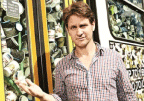 To read this media coverage in Packaging News AU, click the following link: http://www.packagingnews.com.au/sustainability/california-s-answer-to-the-aussie-coffee-cup-crisis#d5Sz5HMDgLBL6giM.99
As Craig Reucassel's War on Waste series tackles the issue of disposable paper cups this week on the ABC, a Californian campaigner is preparing to offer Australians a new solution.
As Reucassel will point out to consumers in the next episode tonight, traditional paper cups are too difficult to recycle because of their interior plastic coating.
Specialised equipment needs to be put in place to remove the plastic, but even then, the process is burdensome and costly, and ultimately, the economics aren't in place to incentivise recyclers to even try to recycle paper cups.
Will Lorenzi, the president of California-based Smart Planet Technologies (SPT), believes he has a solution to this widespread problem in the form of the R3 cup, which is engineered for recyclability.
He's already been working to effect change by way of the cup in the US and the UK, and is now discussing his options with vendors in Australia.
The cup is currently in use in a variety of coffee houses in the US, and will be commercially available in the UK starting July 2017, Lorenzi says.
In Australia, a company called Closed Loop Environmental Solutions, which has been in talks with Lorenzi, is also currently investigating an economically feasible collection and recycling program called Simply Cups.
“SPT is finalising a partnership with Simply Cups, Australia’s recently launched coffee cup recycling program, to ensure the cups are collected for recycling,” Closed Loop sales and marketing manager Brendan Lee said.
The R3 cup from SPT has an interior coating called EarthCoating that works just as well as polyethylene in forming the cup, according to Lorenzi.
It looks the same for the consumer experience, but for the recycler the cup recycles as if there is no coating at all.
“This allows all of premium fibres to be recycled efficiently and profitably by traditional residential recycling without specialised equipment, and that's the best way to solve this problem,” Lorenzi says.
"Change the coating, and the paper cup becomes a valuable material to recycle."
To read this media coverage in Packaging News AU, click the following link: http://www.packagingnews.com.au/sustainability/california-s-answer-to-the-aussie-coffee-cup-crisis#d5Sz5HMDgLBL6giM.99
As Craig Reucassel's War on Waste series tackles the issue of disposable paper cups this week on the ABC, a Californian campaigner is preparing to offer Australians a new solution.
As Reucassel will point out to consumers in the next episode tonight, traditional paper cups are too difficult to recycle because of their interior plastic coating.
Specialised equipment needs to be put in place to remove the plastic, but even then, the process is burdensome and costly, and ultimately, the economics aren't in place to incentivise recyclers to even try to recycle paper cups.
Will Lorenzi, the president of California-based Smart Planet Technologies (SPT), believes he has a solution to this widespread problem in the form of the R3 cup, which is engineered for recyclability.
He's already been working to effect change by way of the cup in the US and the UK, and is now discussing his options with vendors in Australia.
The cup is currently in use in a variety of coffee houses in the US, and will be commercially available in the UK starting July 2017, Lorenzi says.
In Australia, a company called Closed Loop Environmental Solutions, which has been in talks with Lorenzi, is also currently investigating an economically feasible collection and recycling program called Simply Cups.
“SPT is finalising a partnership with Simply Cups, Australia’s recently launched coffee cup recycling program, to ensure the cups are collected for recycling,” Closed Loop sales and marketing manager Brendan Lee said.
The R3 cup from SPT has an interior coating called EarthCoating that works just as well as polyethylene in forming the cup, according to Lorenzi.
It looks the same for the consumer experience, but for the recycler the cup recycles as if there is no coating at all.
“This allows all of premium fibres to be recycled efficiently and profitably by traditional residential recycling without specialised equipment, and that's the best way to solve this problem,” Lorenzi says.
"Change the coating, and the paper cup becomes a valuable material to recycle."
A Better Solution for Coffee on the Go
As seen in Fresh Cup Magazine, May 2017http://www.freshcup.com/a-better-solution-for-coffee-on-the-go/
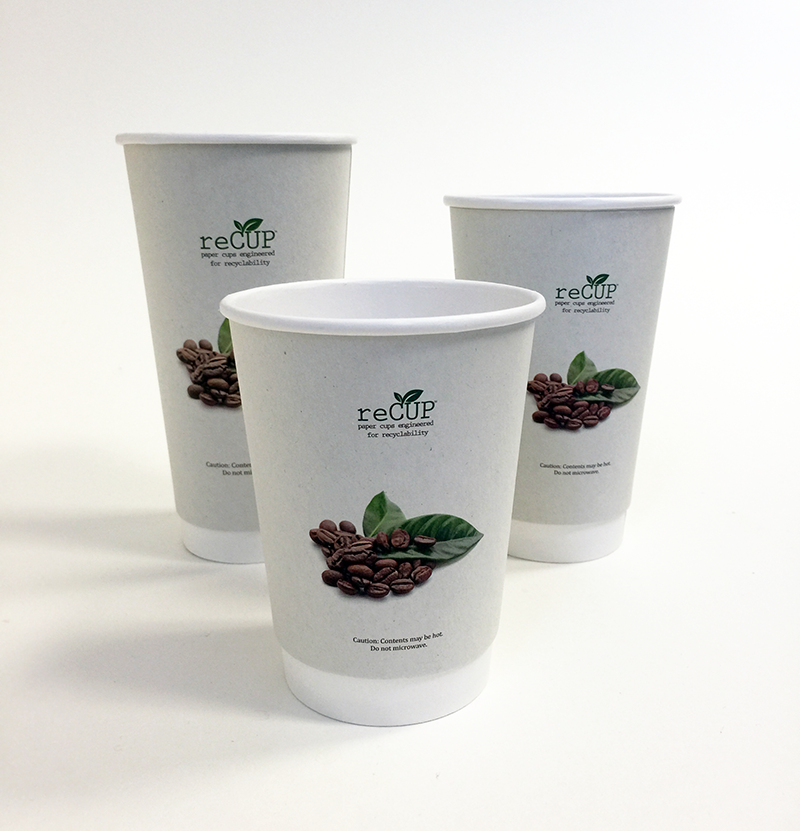
It’s Saturday morning: the cribbage board is out, a newspaper lays splayed open on the counter, and the kettle spits steam as water heats for a pour-over. I cradle my ceramic mug in both hands, carrying it ceremoniously to the Chemex, eager to capture the aromas of first bloom before settling in for a leisurely morning of cards.
My idealistic view of coffee consumption? Certainly. An everyday ritual? Hardly. Sure, it would be nice if we were all in the habit of sitting and sipping our coffee and tea from hand-crafted mugs. But that’s a far cry from reality when it comes to consumer behaviors. To-go culture is alive and well—and creating lots of waste. While the majority of a to-go cup is comprised of paper, traditional take-away cups are rejected by recycling companies because of the polyethylene coating used to keep the cup liquid friendly. This lining is incompatible with standard paper recycling processes, and as such, cups are often treated as waste. A few specialized recyclers have invested in processes to remove the polyethylene coating found on traditional paper cups, but, the process is costly and the rendered fibers are low in quality—only usable in a low-value application such as tissue paper. The ability to transform a paper cup into high-quality recycled paperboards is key—cups need to be made of material that’s valuable to recycle to incentivize recycling facilities to get on board. It’s unlikely we’ll see a massive changeover to ceramic cups anytime soon (though we’re trying to inspire a movement). In the meantime, how can “coffee on the run” be made more sustainable? The next best thing after ceramic would be a cup that’s affordable for cafés to use, performs as well as a traditional paper cup, and can be manufactured with the same process and equipment as traditional cups. This ideal cup would also be engineered to be recyclable in standard recycled paper mills—profitably—as if there was no polyethylene coating at all, allowing it to be used in high-quality recycled paperboards. The makers of reCUP believe they’ve found this ideal solution. They’ve created a fully recyclable paper cup that meets the above criteria. The new cup technology was engineered by Smart Planet Technologies and uses an interior coating called EarthCoating, a mineralized blend of polyethylene and calcium carbonate. The cup is designed to be fully repulpable and recyclable using traditional paper recycling equipment and processes. The ability to transform a paper cup into high-quality recycled paperboards is key—cups need to be made of material that’s valuable to recycle to incentivize recycling facilities to get on board. The new recyclable to-go cup is also winning over major names in coffee that are looking to influence a wave of change industry wide. UK coffee giant Costa Coffee made global headlines when they announced plans to run product tests with reCUP as part of an effort to transition to using fully recyclable cups. Costa had already taken steps to promote in-store recycling of traditional cups, but also opted to explore early adoption of reCUP to allow customers to recycle cups anywhere. As more cafés offer a recyclable takeaway cup, pressure builds for industry-wide adoption. With increased volume of recyclable cups, additional recycling jobs are required to meet the demand for processing reusable materials, extending the reach of sustainability afforded by to-go cup technology far beyond the café.
We may be far from adopting an everyday ceramic habit, but we’re certainly a significant step closer to ending the unnecessary waste caused by to-go cups.
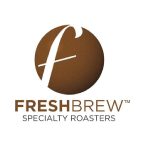
In the Wild
FreshBrew, one of the largest US-based coffee roasters and the coffee partner of American Airlines, has recently begun exploring how EarthCoating may be used as an environmentally friendly alternative to traditional plastic coatings for the paper cups and other paperboard barrier packaging they use to serve their products.
Costa trials reCUP paper cup in bid to boost recycling
To read the story in Packaging News UK, click the link below:http://www.packagingnews.co.uk/news/markets/drinks/costa-trials-recup-paper-cup-in-bid-to-boost-recycling-22-03-2017 Costa Coffee is evaluating Smart Planet Technologies’ reCUP paper cup to use in its stores. If successful the cups could help improve acceptability of paper cups for out-of-store collection and recycling. Now, Costa Coffee is addressing challenges in out-of-store recycling by conducting a comprehensive evaluation of the reCUP to improve the process-ability and acceptance of paper cups in standard recycling facilities across the UK, while maintaining the performance standards of Costa Coffee’s takeaway paper cup. The evaluation will also validate the acceptance of reCUP paper cup technology under UK and EU regulations for paperboard packaging. Will Lorenzi, president of Smart Planet Technologies, said a switch by Costa to the reCUP would serve as a ‘proven option’ for the rest of the foodservice packaging industry in the UK to consider, instead of paper cups that that are unacceptable to the standard recycling facilities. “The reCUP has the potential to address the entire issue in a cost-effective manner, and provide the recycling industry with a new source of feedstock for recycled paper packaging.” He added the cup could prove to be a cost-effective transition, that is manufactured on standard paper cup forming equipment at full line speeds. Traditionally, paper cups have been coated on the interior with polyethylene or other plastics, to form the cup and hold liquid contents, but which has made paper cups difficult to recycle in standard paper recycling processes. This is the main reason for the low recycling rates when it comes to paper cups.
A Dirty Secret
by Pan Demetrakakes
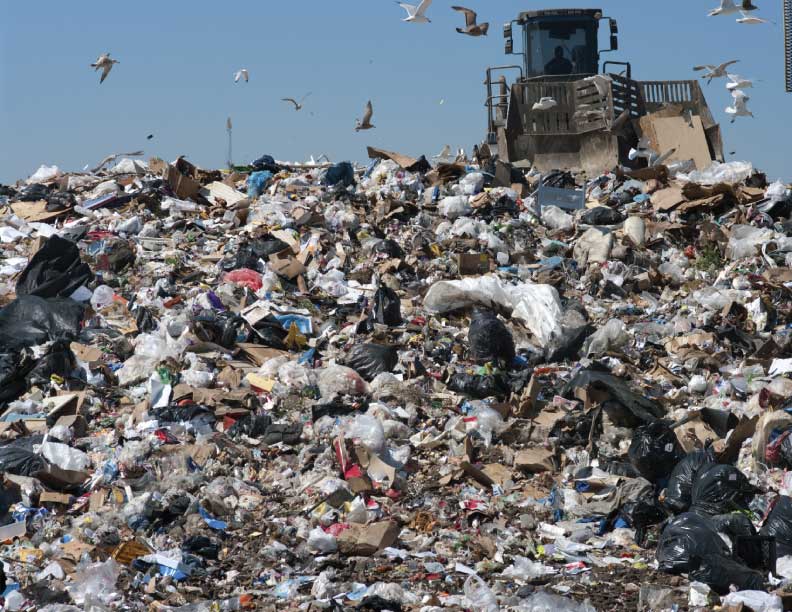
In a lot of coffeehouses, the trash has a dirty secret. No matter how ecologically minded the owners or clientele are, no matter how carefully the paper coffee cups are separated from the rest of the garbage, those cups are destined for a landfill.
To read the full article, click this link: A Dirty Secret

